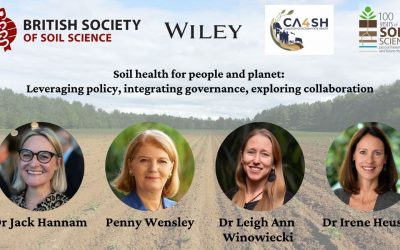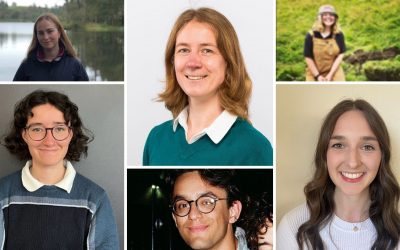
We have a broken global carbon cycle. The climate-nature crisis results from a short-circuiting of the carbon cycle through the burning of fossil fuels (about 70%) and land use change (about 30%).
‘Soils, nature and climate – now’ shows an extractive economy based on fossil fuel use. Peatlands are drained and degraded, deer suppress peatland and woodland restoration, woodlands mostly commercial plantations, grasslands for livestock are mostly fertiliser-fed, the lowlands are mainly mono-cropped with most of the trees and hedges removed, flood plains are prevented from flooding, urban areas have little greenspace especially in poorer areas, coastal habitats such as salt marsh, seagrass, and kelp have been diminished, the seabed is widely disturbed.
Carbon that would normally be stored and in sediments for hundreds or thousands of years (in soils) or millions of years (in fossil fuels) is returned to the atmosphere in years.
Land-based emissions result from land use change from more biodiverse to less biodiverse uses, including monocultures, and drainage especially of wet carbon-rich soils.
All life on Earth is carbon-based, and soils, along with the oceans, perform a pivotal role in the global carbon cycle. Our modern carbon and water cycles came into play with the evolution of the leaf – and so modern soils – about 400 million years ago. Soils also regulate other key cycles for life including nitrogen and other nutrients.
Healthy soils and marine sediments – diverse and functioning effectively – are essential to a healthy climate-nature system. The stronger our disruption to these cycles, the greater the problems for nature and people.
To reach net zero and to maintain it we have to fix the green and blue parts of the carbon cycle. Fixing the black bit (fossil fuels) is vital, but no amount of heat pumps or electric vehicles will fix the green and blue bits: we have to transform the way we use all land and sea for farming, fisheries, forestry and in the uplands.
‘Soils, nature and climate – 2045’ represents a circular economy embedded in nature[1]. Peatlands are re-wetted and restored. Commercial and conservation woodlands are more diverse. Agroforestry is the norm, and there are more hedges and more, smaller, fields. Intercropping is widely practiced for control of pests; most farms mix crops and extensively grazed livestock. Soil health is key. Most river banks are wooded and flood plains flood – they are seasonally wet. There’s more greenspace in towns and cities to manage surface water, enhancing local nature and sequestering carbon. More extensive and diverse marine habitats and less disturbance of the seabed ensures both productive fisheries and more resilience in marine biodiversity undergoing a long recovery from acidification. Sea levels continue to rise and both coasts and rivers are recognised and managed as dynamic systems.
In a circular economy, food systems will reflect the productivity of natural systems with more emphasis on lower trophic levels (plants and plankton).
But, not only must our use of the land and sea contribute to and maintain net zero, it must be resilient to inevitable changes. These consequences include increased frequency and intensity of floods, fires, drought, pests, disease and pandemics. A changing climate impacts nature and its associated services more severely the more degraded it is[2].
Fixing the green and blue bits of the carbon cycle through soil health and more diverse nature not only builds resilience to these events, it makes them less likely by correcting disruptions to biogeochemical cycles.
One way or another land and sea use will change. If we choose a 2+ºC world, the changes are largely out of our control, driven increasingly by the impacts of a changing climate with its inherent and increasing chaos imposing escalating loss and damage costs to people and planet.
But in a 1.5-2ºC world the changes are largely in our control. This ‘no-regrets’ pathway is far and away the least costly to people and planet.
[1] Dasgupta (2021) The Economics of Biodiversity
[2] E.g. successive IPCC reports including AR6 WGII, GBO and IBPES (2019)
The views expressed in this blog do not necessarily reflect the views of the British Society of Soil Science.





